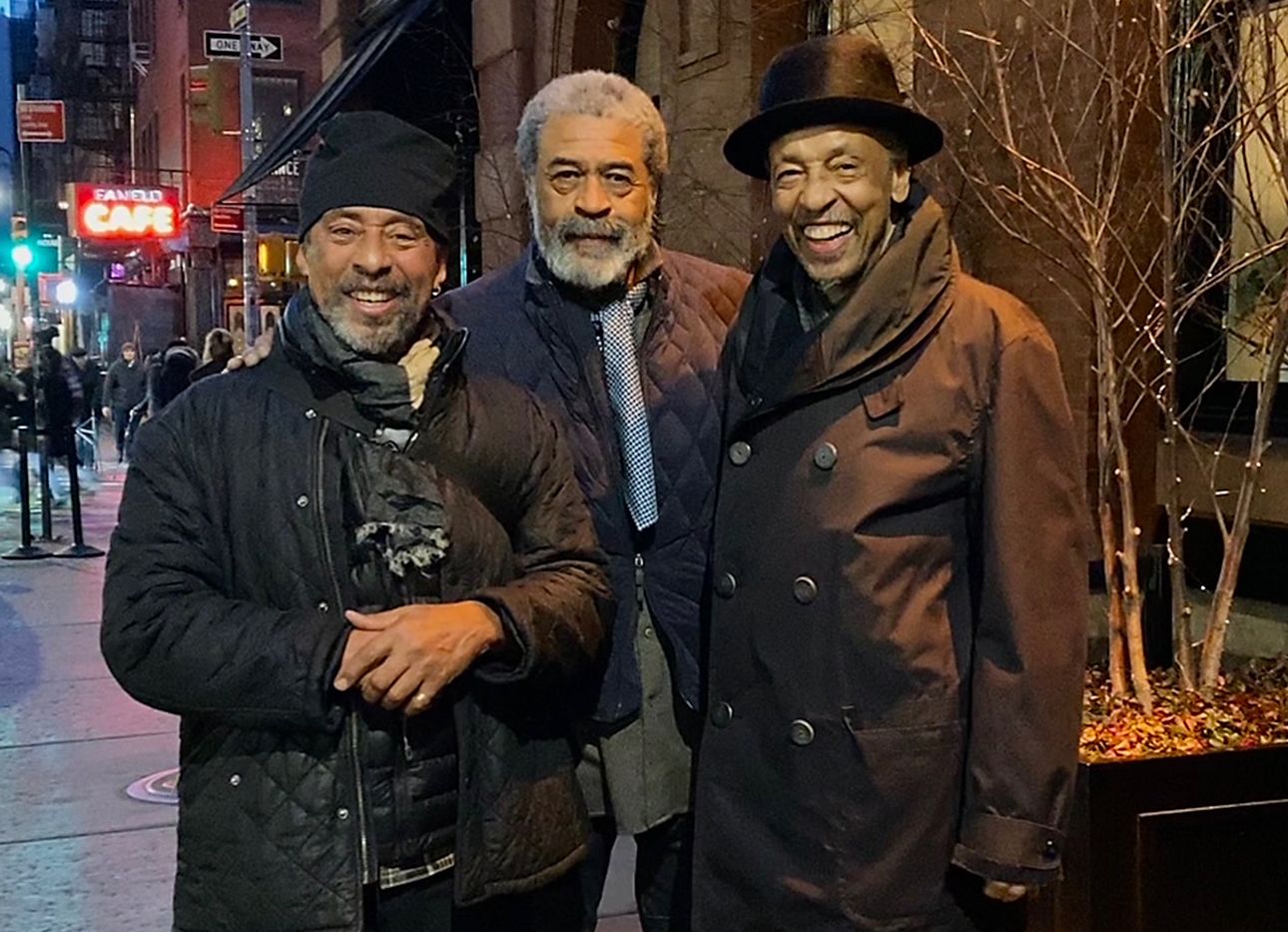
In Detroit, McArthur Binion and Henry Threadgill Salute Their Decades-Long Friendship Through Song
A composer, saxophonist, and flutist on the cutting edge of jazz since the ’70s, Henry Threadgill became one of only three jazz musicians to have received a Pulitzer Prize in 2016, for the radical stylings of his masterful quintet, Zooid. Meanwhile, artist McArthur Binion, having honed his craft of painting and drawing deceptively complex, minimalist patterns over several decades, rocketed to long-overdue prominence in the 2010s. His work featured in a slew of high-profile gallery exhibitions and the 2017 Venice Biennale, and was acquired by the Metropolitan Museum of Art, the National Museum of African American History and Culture, and the Detroit Institute of Arts, among others, for their permanent collections. Three years ago, following this newfound recognition, Binion established the Modern Ancient Brown Foundation in Detroit, where he earned his B.F.A. at Wayne State University (and later, earned his M.F.A. from Cranbrook Academy of Art, located in nearby Bloomfield Hills). The organization aims to elevate the city as a dynamic center for contemporary artists, to support its artists of color through a mix of residencies and grants, and to steward a growing collection that includes work by emerging and established practitioners, such as the photographer Jules Allen, whose work is currently on view at the foundation (and who knows Binion and Threadgill well).
Through and well before these recent achievements, Binion and Threadgill have been close friends. Their camaraderie began in New York in the ’70s, when they ran in the same circles of artists, musicians, writers, and dancers during the halcyon days of the city’s avant-garde scene. They met in their early 30s, when Threadgill was already a widely renowned artist (in no small part due to the singular output of his former pianoless ragtime trio, Air). “Back then, the city was very small, so everybody knew each other,” Binion says. “It was an amazing time.” Binion refers to the period’s artistic community—mentioning figures including composer Butch Morris and artist David Hammons—as the second-generation Black Avant-Garde, successors to the likes of John Coltrane, Cecil Taylor, and Miles Davis. While he and Threadgill worked in different mediums, being steeped in the moment bound them with a shared aesthetic sensibility: a fondness for many of the same artists, and a sense of coming from the same mindset. As Binion puts it, “There’s a certain lyricism we share.”
Now, with the accumulation of triumphs achieved over the long arch of each other’s artistic lives, Binion and Threadgill’s respective creative geniuses are poised to intersect. “We come from the same place, but we’re also now at the same place [in our careers],” Binion says. To mark the occasion, he commissioned Threadgill to compose and conduct a 75-minute musical piece, Brown Black X, which will be performed at the Detroit Orchestra Hall on June 24. The work will honor their abiding friendship as well as the Modern Ancient Brown Foundation and the elder Black and brown artists who were a part of the movement Binion and Threadgill shared in. (Allen, the photographer, will document the festivities.)
Listeners can look forward to hearing Threadgill’s enduring musical brilliance in real time. (“I gave Henry total creative freedom,” Binion says of his brief to his friend.) For the free, ticketed performance, Threadgill will bring together Zooid and several Detroit-based musicians to play his new score. Last week, Threadgill was still working through his ideas for the piece, waiting to see how playing it would sound before shaping it further.
Still, a few of his remarks hinted at what to expect from the show. Morse code, James Joyce’s Ulysses, and the pace of the human heart have all been guiding influences in Threadgill’s previous compositions. This time, looking to Binion’s work for inspiration, Threadgill points to the ways his friend encodes information into repeating motifs. Take Binion’s “DNA” series, for example, in which paintings that appear from afar as simple, geometric patterns up close reveal themselves to be intensely personal collages of objects including birth certificates, identification cards, childhood photos, and handwritten notes. “Things are hidden in the pictures,” Threadgill says of the series. “Information is coded there in what appears to be repetition, and that’s something I’m interested in: how to deal with repetition in a different way.”
How that will manifest in the score itself remains to be heard, but with a decades-long friendship and two vital artistic legacies to reflect on, the performance will likely be a cerebral spectacle and celebration.